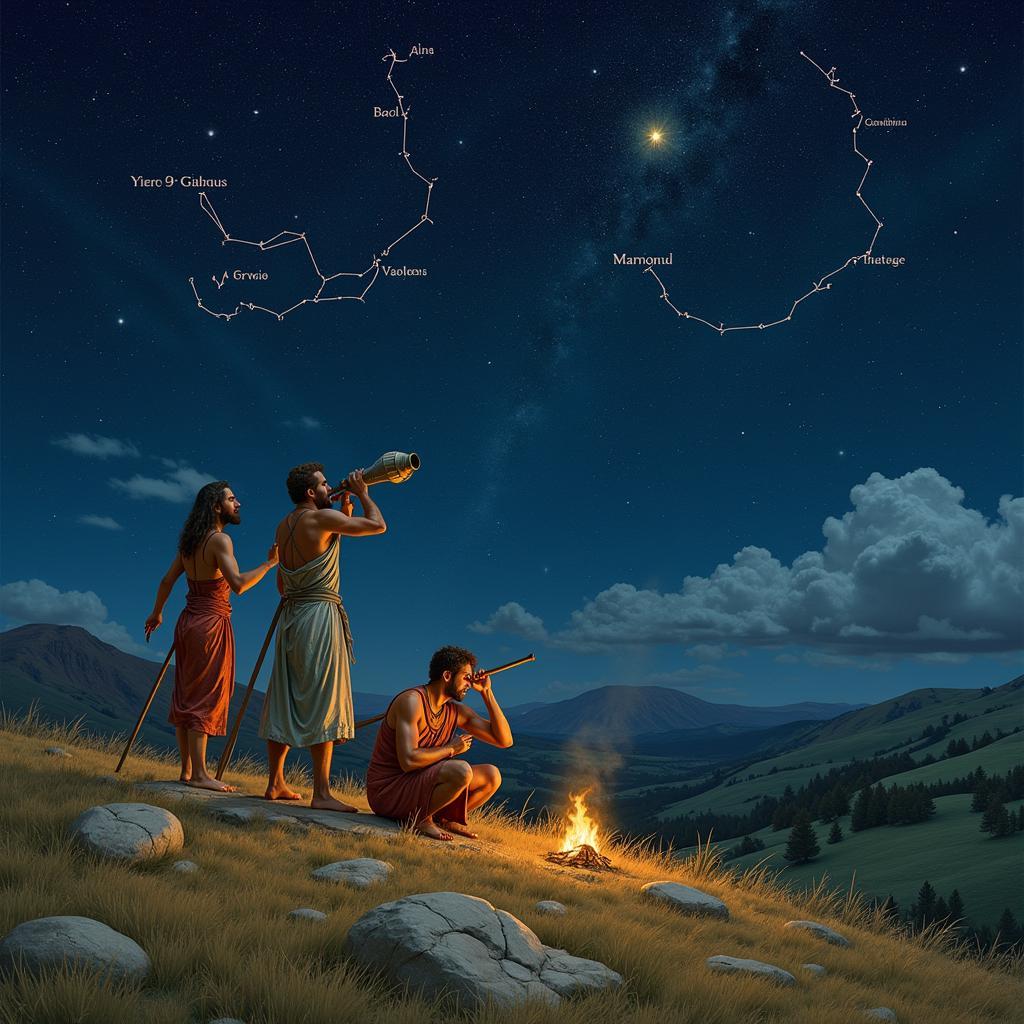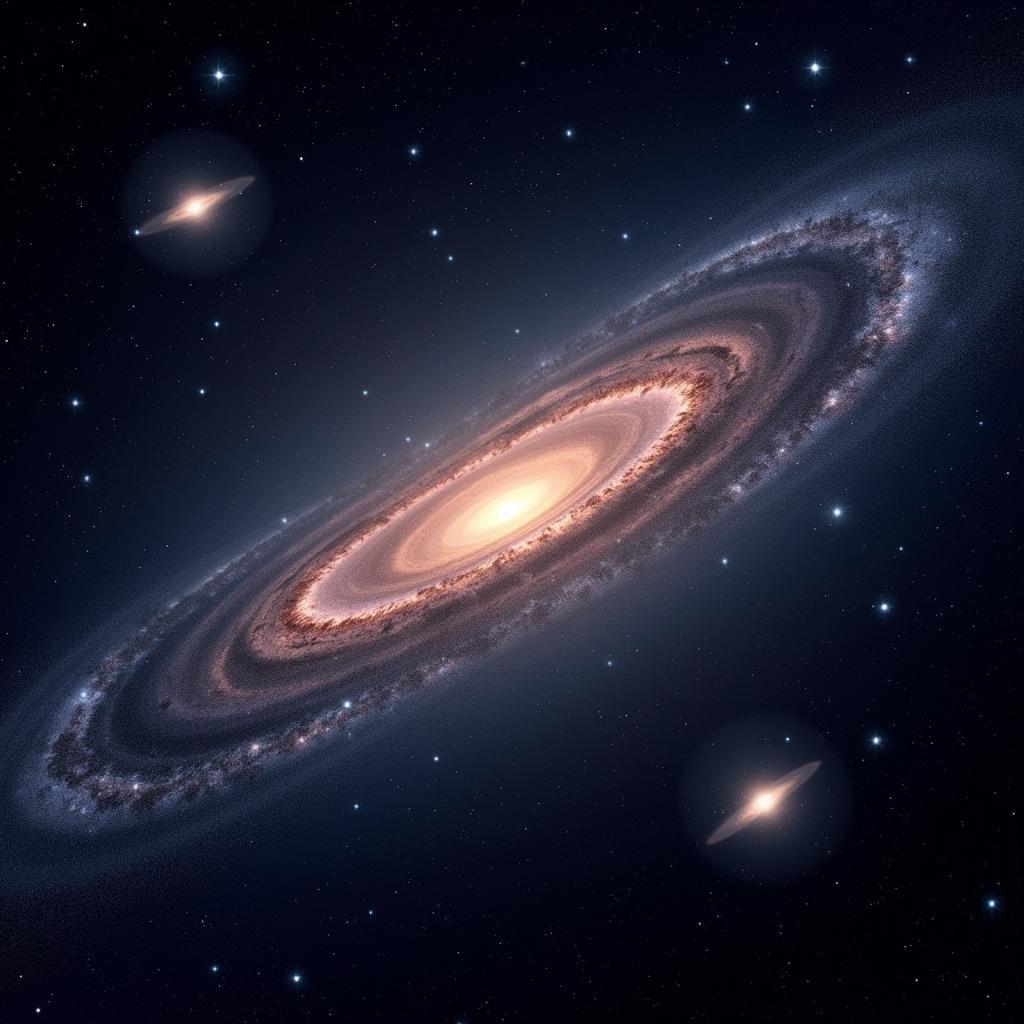Firmament Research delves into the intriguing realm of the sky above, seeking answers to age-old questions about its nature, origins, and the celestial tapestry it holds. Often intertwined with ancient cosmology, mythology, and even religious beliefs, the firmament has captivated humanity for millennia. From the stargazers of ancient civilizations to modern astronomers armed with cutting-edge technology, the quest to understand the firmament has been a constant throughout history.
Deciphering the Firmament: A History of Wonder
 Ancient Stargazers Studying the Firmament
Ancient Stargazers Studying the Firmament
Throughout history, various cultures have developed unique interpretations of the firmament. Ancient Egyptians viewed it as a celestial ocean, while the Greeks envisioned a celestial sphere upon which stars were fixed. The Judeo-Christian tradition often depicts the firmament as a solid dome created by a divine being. These interpretations, though rooted in different cultural and religious contexts, highlight the universal human fascination with the sky above.
Modern Science and the Firmament: A Shift in Perspective
The advent of modern science, particularly astronomy and astrophysics, revolutionized our understanding of the firmament. No longer seen as a static, impenetrable dome, the firmament is now understood as the vast expanse of space containing stars, planets, galaxies, and other celestial phenomena.
The Expanding Universe and the Firmament’s Nature
 Illustration of the Expanding Universe
Illustration of the Expanding Universe
The discovery of the expanding universe in the 20th century further challenged our perception of the firmament. The realization that the universe is not static, but constantly expanding, implies a dynamic and evolving firmament, far more complex than previously imagined. This concept also raises profound questions about the origins of the universe and its ultimate fate.
Exploring the Firmament: Tools and Techniques
Today, astronomers utilize sophisticated tools and techniques to study the firmament. Telescopes, both ground-based and space-based, allow us to peer deep into the cosmos, observing distant galaxies and capturing stunning images of celestial objects.
Unraveling Cosmic Mysteries
 Hubble Space Telescope Capturing Deep Space Image
Hubble Space Telescope Capturing Deep Space Image
Instruments like the Hubble Space Telescope have revolutionized our understanding of the universe, providing crucial data about the age, expansion rate, and composition of the cosmos. By analyzing light from distant stars and galaxies, scientists can glean insights into the processes that govern the evolution of stars, the formation of galaxies, and the nature of dark matter and dark energy.
The Firmament: A Source of Ongoing Exploration
The firmament continues to be a source of endless fascination and exploration. As our technology advances, we can anticipate even more groundbreaking discoveries that will further unravel the mysteries of the cosmos. From the study of exoplanets to the search for extraterrestrial life, the firmament holds the key to answering some of humanity’s most profound questions about our place in the universe.